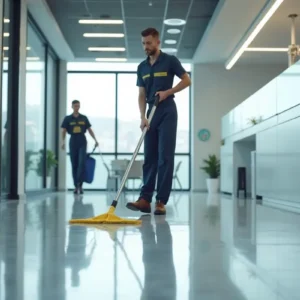Synthetic pest control agents may get rid of some pests quickly, but they can potentially harm your plants over time. Natural pest control methods offer a more sustainable solution for keeping your garden and home pest-free.
Effective Strategies explains how to take a holistic approach to pest control. Prevention and suppression are the main goals, but eradication is also an option in some situations.
Preventing Pests
Pests may come in various shapes and sizes, but all share the same need for food, water, and shelter. Keeping woodpiles and other potential shelters away from your home, cleaning out the garbage regularly, and keeping the lawn adequately mowed can minimize the risk of pests making their way inside.
It is important to make sure that all doors and windows have proper screening and sealing to prevent insects and other unwanted elements from entering the house. A gap the size of a pencil can allow mice and other rodents to enter your home. Ensure that air ducts on roofs and passive vents are closed off and any old pipes that are no longer in use.
It’s important to store food and garbage in containers that are sealed tightly and to dispose of waste promptly. Reduce clutter and remove pet droppings, which can contaminate food products. Certain plants, such as mint and marigolds, also naturally repel pests. Spraying pesticides around the home can also be preventive, but only after implementing other strategies.
Identifying Pests
Identifying pests is crucial to developing and implementing effective pest control in Inverness fl strategies. However, accurate identification is often tricky because pests change appearance throughout their life cycle. For example, immature beetles look very different from adult beetles.
An online resource, a field guide, or a pest identification manual can help with proper identification. It is also a good idea to consult with an expert or send samples to a lab if necessary.
Practicing preventive measures can significantly reduce the number of pests in your garden and home. For example, focusing on removing standing water, decluttering living spaces, sealing cracks and crevices, and spraying pesticides regularly can make it more difficult for pests to enter your home or garden.
Getting Rid of Pests
Once a pest invades your home, you must eliminate its food, water, and shelter access. This includes sanitizing all rooms and areas where they might be hiding. This also means removing clutter, cleaning frequently, and sealing any cracks that may provide entry points into your home. For example, some pests like silverfish and house centipedes can enter homes through chimney vents and air conditioning units; these need to be tightly closed and sealed.
Natural, nonchemical pest control methods should be your first choice, especially for continuous or sporadic pests. Planting pest-repelling plants, creating homemade traps (for example, sugar and vinegar for fruit flies), and spraying outside your home with an all-natural insecticide are some effective control options. These strategies will prevent the need for more drastic measures, such as pesticides.
However, when infestations become too severe for DIY solutions—such as with rodents—it’s important to call in a professional exterminator for rats and mice. They can employ eco-friendly methods to effectively eliminate the problem. This applies to any infestation that can’t be resolved with home remedies. Professional intervention ensures a safer and more thorough solution.
Monitoring Pests
Identifying and monitoring pests on an ongoing basis can help prevent problems before they occur. In commercial settings, this can involve weighing the value of plants versus the damage that a particular pest might cause and identifying the least harmful intervention method.
Regularly look for and seal any cracks, crevices, or gaps that could allow entry for rodents like rats and mice. These can be in walls, foundations, and windows — especially the basement and attic — and should be sealed with anything they cannot chew through, such as steel wool.
Biological controls include predators, parasitoids, and pathogens (viruses, bacteria, protozoans, or fungi that reduce an insect population). The most widely used example is the bacterium Bacillus thuringiensis, which can be formulated to kill caterpillars and other insects without harming humans or pets. This and other biocontrols are an integral part of IPM plans. This approach takes time and patience to establish and requires a thorough understanding of pest biology and ecology.




